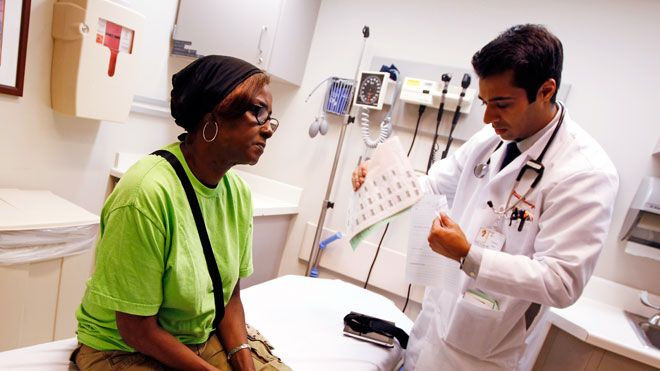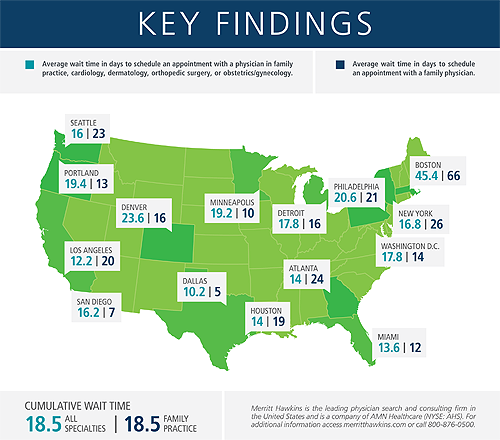Doctor's Appointment Average Wait Time 18.5 Days Across 15 Cities: Boston Patients Wait Average 72 Days For Dermatologist

Due to a general fear of the unknown, most people tend to avoid the doctor’s office, so when they are actually making an appointment the last thing they want to do is wait. A recent survey conducted by Merritt Hawkins, a company of AMN Healthcare, revealed the average wait time across five major medical practices including cardiology, dermatology, family care, obstetrics/gynecology (OBGYN), and orthopedic surgery came to 18.5 days.
“Finding a physician who can see you today, or three weeks from today, can be a challenge, even in urban areas where there is a high ratio of physicians per population,” Merritt Hawkins President, Mark Smith, said in a statement. “The demand for doctors is simply outstripping the supply.”
Researchers from Merritt Hawkins reached out to 1,399 medical offices from 15 of the country’s largest metropolitan areas to see how long it would take to schedule an appointment. Out of 15 of the largest cities in the United States, scheduling an appointment with a physician in Boston will take a patient the longest at 45 days. In terms of individual practices, on average, it takes a person in Boston 72 days to see a dermatologist, 66 days to see a family doctor, 46 days to see an OBGYN, 27 days to see a cardiologist and 16 days to see an orthopedic surgeon.

Other findings from the survey revealed that people in Philadelphia have to wait approximately 49 days to see their dermatologist. People in New York City have to wait 26 days to see a family physician, while it takes 18 days to schedule an appointment with orthopedic surgeons in San Diego. Even though Dallas reported the lowest amount of wait time at 10 days, only 23 percent of physicians accept Medicaid. In the two previous years, Merritt Hawkins released similar data, and in 2004 and 2009, Boston also ranked in at number one among cities with the longest physician wait time.
While Boston averaged the longest wait time for scheduling a doctor’s appointment, it also scored the highest rate of Medicaid acceptance at 73 percent. Unfortunately, across all 15 cities only 45.7 percent of physicians accept Medicaid. This did not surprise the research team who said Medicaid often pays less than what it costs doctors to provide care for their patients. Smith and his colleagues from Merritt Hawkins fear scheduling an appointment with a physician may become even harder once millions of previously uninsured people are covered under the Affordable Care Act.
“Having health insurance does not always ensure access to a physician,” Smith added. “More physicians will need to be trained, and access to other types of providers expanded, to ensure that health care delayed does not become health care denied.”



























